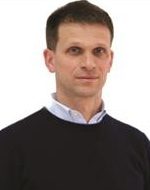Richard Storrie

Rio Sava Exploration d.o.o.
Richard Storrie has been advancing Rio Tinto’s exploration projects in Serbia since early 2012. He is responsible Rio Sava Exploration, Rio Tinto’s wholly-owned operating company in Serbia.
Richard has served in senior management positions for Rio Tinto for over 20 years. He has worked across the globe in a wide range of underground and open pit operations and projects, including the underground operation at Greens Creek Mine in Alaska (lead, zinc silver gold), Palabora underground block cave project in South Africa (copper), the underground project at Diavik Diamond Mine in northern Canada, and the Argyle Diamond Mine in Australia. Richard has extensive technical, operational and strategic development experience at various stages of the mining cycle, and has contributed to advancing some of the most valuable mining assets worldwide. Prior to moving to Serbia in 2012, Richard was the manager of technical services at Oyu Tolgoi, Rio Tinto’s legacy copper and gold project in Mongolia.
Rio Tinto lithium-borate Jadar project
The Jadar Project is a world-class lithium borate deposit discovered by Rio Tinto in 2004 near the town of Loznica, Serbia. It contains Jadarite – a new mineral found nowhere else in the world. Rigorous ore body knowledge studies and analysis completed in 2016 increased confidence in the size and composition of the Jadar ore body. In March 2017, Rio Tinto upgraded the Jadar Mineral Resources in accordance with international standards – JORC – to 136 million tonnes. For the first time, part of the resource has been classified as Indicated; the deposit also contains Inferred resources. When developed, Jadar will be a modern underground mine with efficient processing and shipping facilities with a projected mine life of more than 50 years. A global team of Rio Tinto experts have developed new processing technology to extract boric acid and lithium carbonate from jadarite ore. Significant investment is required to continue technical analysis and planning to move from prefeasibility to feasibility, then to construction and operation.
